Biking down Bolivia’s Death Road: Everything you NEED to know
“You have to stay focused. People die on Bolivia’s Death Road”, the guide with an Australian accent said as he took a large bite of his cheese sandwich. The music was playing loud on the car stereo. I could see the other guide fumbling with his camera in the front seat.
I hadn’t been nervous up until this minute. After all, I’m an adventurer. I love getting out of my comfort zone. Yet, the backpack handle suddenly felt heavy in my clammy and slightly shaking hands.
***
We went to La Paz for one reason.
It was something I’ve wanted to do since I heard about it the first time, and I didn’t tell my mom beforehand:
To bike down the most dangerous road in the world – Bolivia’s Death Road.
But what is the Death Road in Bolivia and should you be worried about biking it? Well, that answer isn’t as straightforward as you’d think.
So, in this guide, I’ll share my experience on the Death Road in Bolivia and tell you all the info you need to know before you go!
This post contains referral links for products I love. Adventurous Miriam earns a small commission at no extra cost to you if you purchase through my links. I appreciate your support ♡ Learn more
What is the Death Road exactly?
Bolivia’s Death Road (formal name: the North Yungas Road) is a 64 km mostly downhill stretch of treacheries turns and 600-meter drops that connects La Paz with the Amazon rainforest in the north.
Every year, 25,000 dare-devils cycle on it, and when the road was most used it claimed 200-300 deaths per year from crashes or falling off the steep cliffs.
And yet, here I was, signing off my life.

Which tour company to go with
We went with Gravity Assisted Mountain Biking and paid 750 Bolivianos for the trip.
There were cheaper options to choose from, but I’d only heard good things about this company and I didn’t want to jeopardize either the experience or our lives.
I have only good things to share about Gravity and they wholly lived up to my expectations.
Book here – Gravity Assisted Mountain Biking
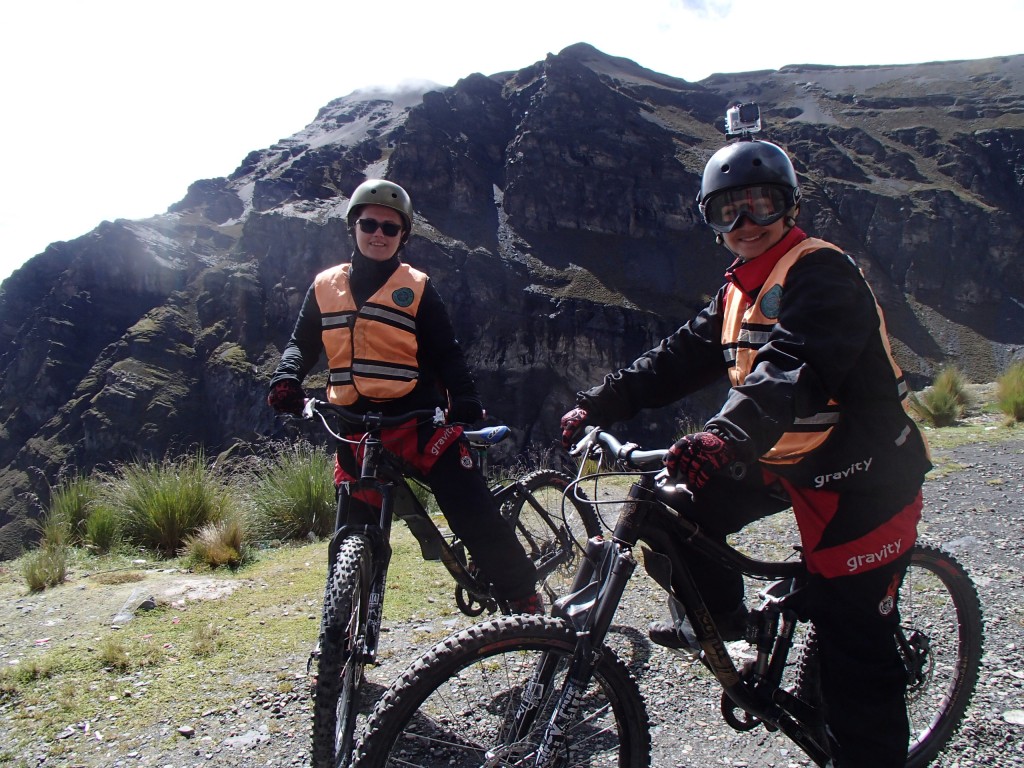
So…why is it called The Death Road?
Well, the reason the Death Road in Bolivia got such a scary name is that the road is dangerous because of its steep slopes, narrow single track (3 meters in some places), and lack of guardrails.
Plus, fog and rain reduce visibility and make the road muddy.
Up until the 1990s, 200 to 300 drivers fell off the cliff each year. As a result, it was called the most dangerous road in the world in 1995 (source).
Today, it’s only used by mountain bikers.
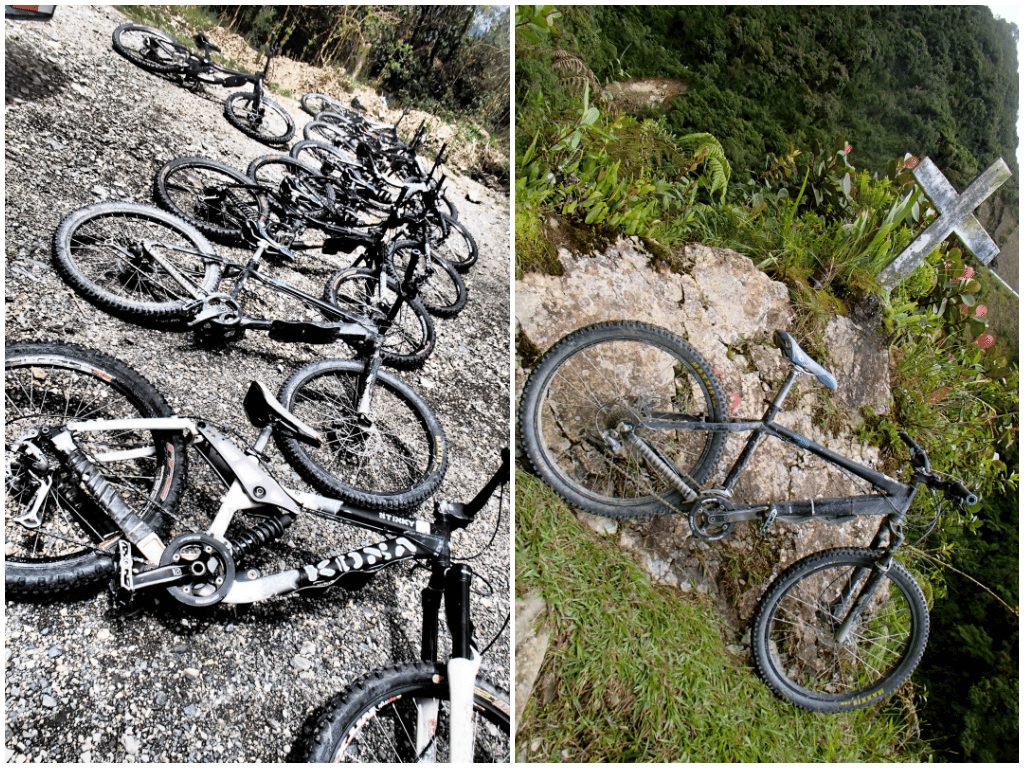
My experience: What The Death Road is really like
The day started at a cafe downtown La Paz where we met our guide and fellow bikers.
There were eight in total: us, an Australian couple, an English doctor, a German couple, and an Austrian. Our guide, Steve, was from New Zealand and he had been doing this for some time.
With the legal work out of the way, we could begin our ascend to La Cumbre at 4,615 meters.
At the point of take-off, Steve gave us a thorough introduction to the ground rules of biking Bolivia’s Death Road and then passed around a small bottle of what looked like water.
He explained that drinking and then spitting some of it on the bike’s front wheel would count as a blessing to Pachamama, the goddess Mother Earth.
And who would want to offend her today of all days? Um, not me! So, I took a huge swig of it, but before I could spit it out, it aggressively numbed out my mouth and throat.
Steve got a weird look on his face and everyone else gasped as I spat it out through my teeth while coughing like crazy. With a mouth full of ethanol, I was already counting my blessings.

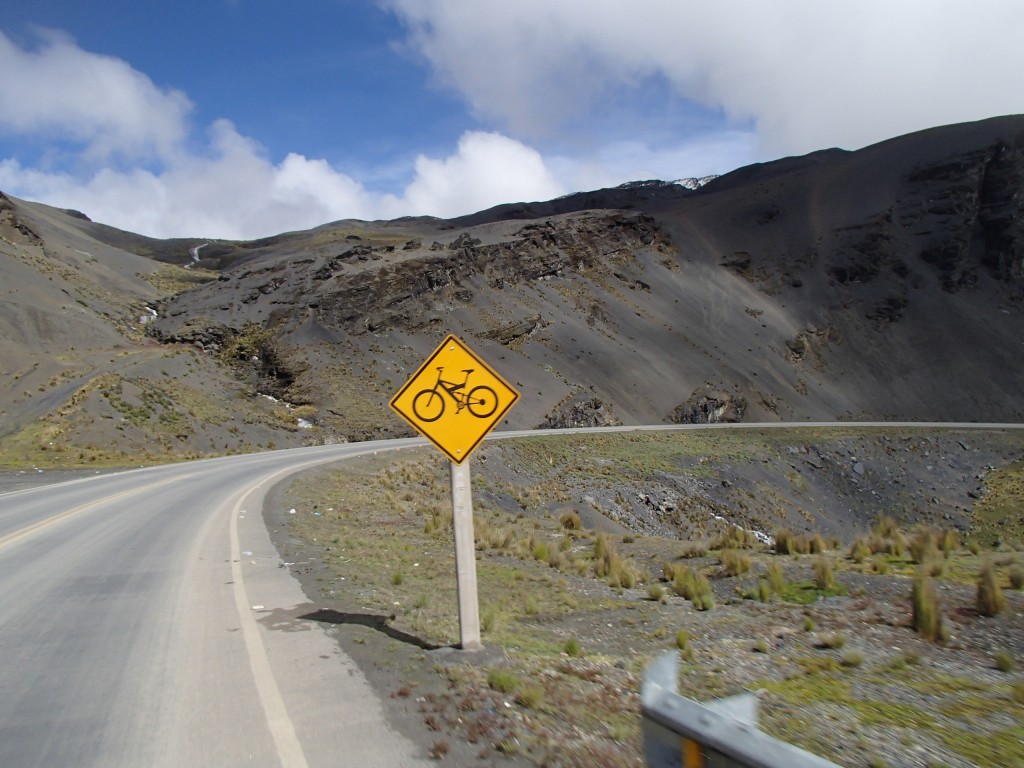
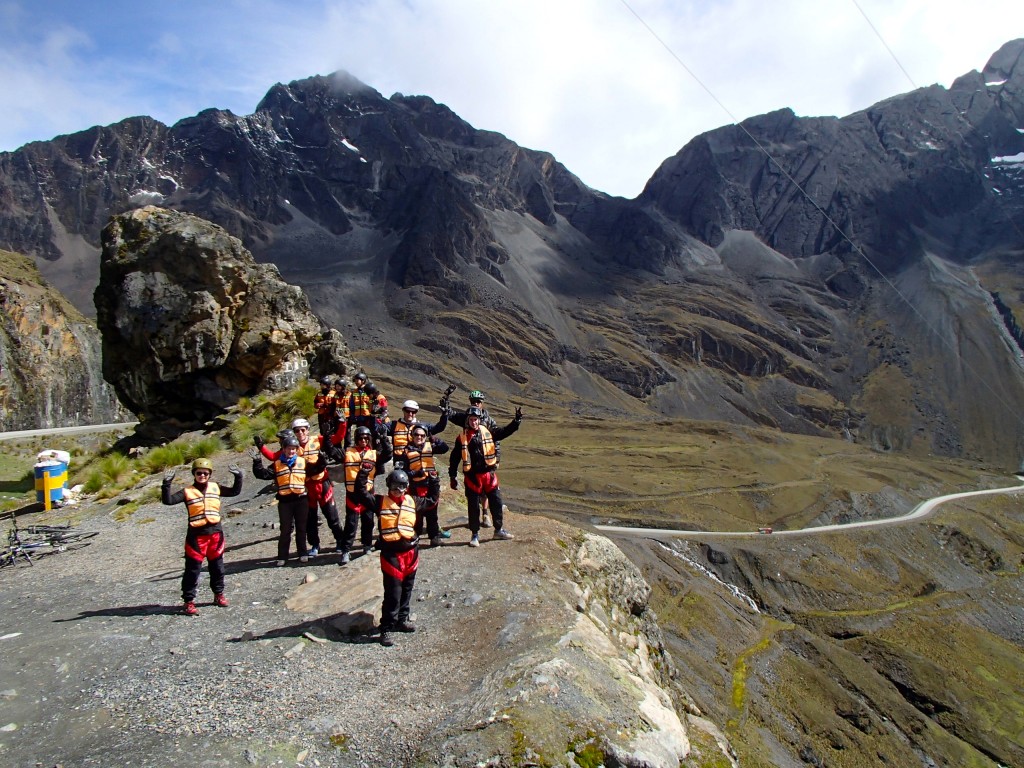
The first 22 km was a major blast. Sun was out, the road was all ours, the view was stunning, and I was speeding crazily.
When we got to the gravel road, I was totally on top of my game. Adrenaline pumping through my body, and I was more than ready to risk meeting my maker along this deadly next stretch.
For those of you who haven’t tried mountain biking on gravel, let me clarify one thing:
It. Is. Hard.
Not only is this kind of road like a skating rink, but the pebbles and large rocks make it extremely uneven as well.
Within the first few minutes, one from the group fell off his bike, I had absolutely no control over mine what-so-ever, and this was how the rest of the trip would be like – oh, and with a 600-meter drop on the twisty dirt track, barely wide enough for one vehicle.
Welcome to Bolivia’s Death Road.
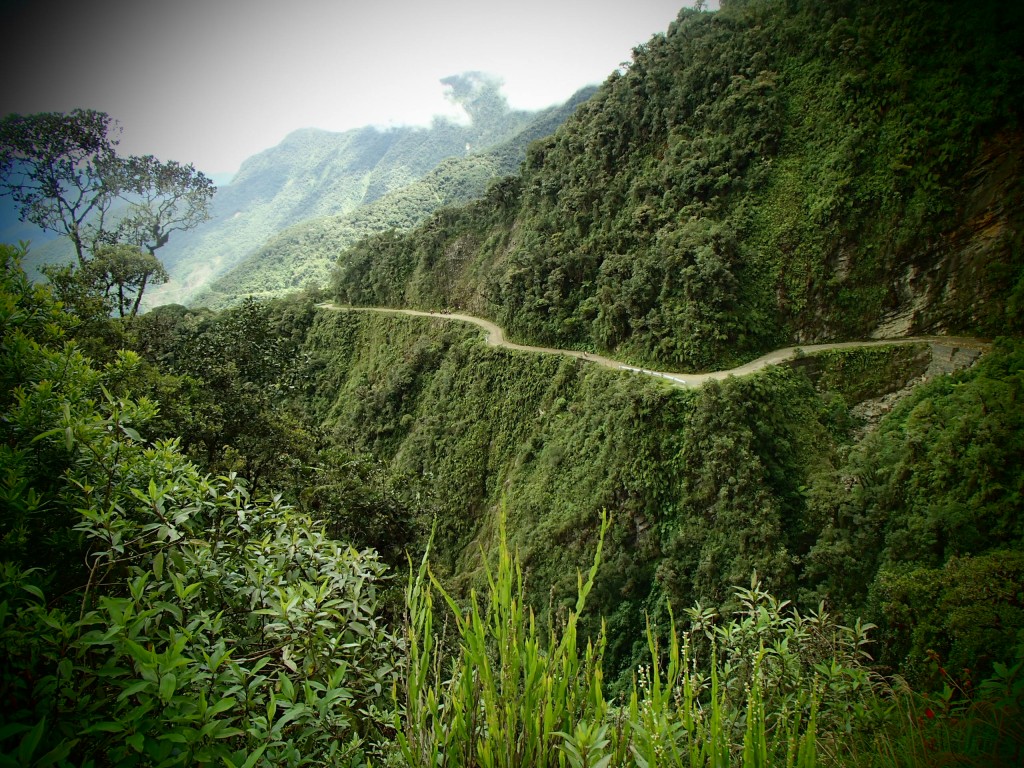
Video of my bike tour down Death Road
Now, it would be nice to brag about speeding all the way down, but that would be lying. To be honest, I was squeezing the brakes constantly to the point where I thought my index finger would break.
Buuuut I still went fast enough to have my heart racing.
We stopped often, and there were absolutely stunning views of the countryside. Along the road, we saw numerous small waterfalls rain down from the cliff sides, tumbling stones on the road, and unpaved roads mostly without guard rails.

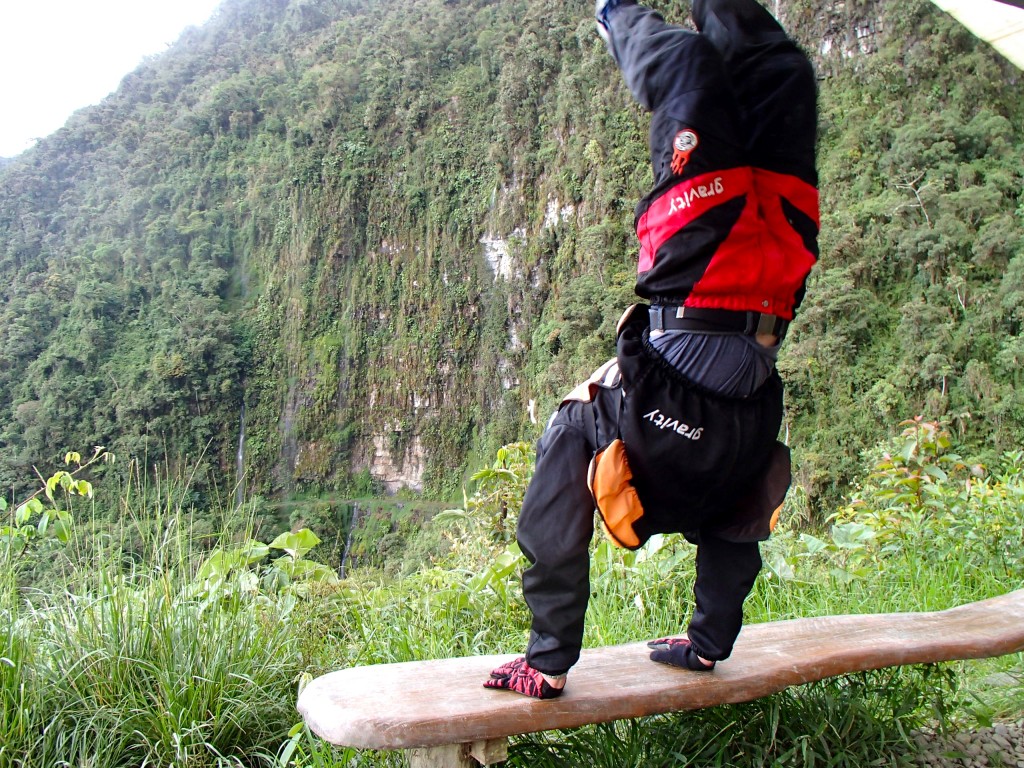




How long does the Death Road trip take?
It took us six hours to cycle the entire route during which I endured low temperatures at the start, followed by rain, and finally blinding sunshine and tropical humidity.
Is the Death Road worth it?
YES!
Biking down Bolivia’s Death Road was without a doubt the most fun, thrill-giving adventure I’ve been on for a long time.
It earns a place right next to swimming with whale sharks and volcano boarding!
Having just returned from the Inca Trail, and my whole body still in aching pain, I also got confirmed that adrenaline-instant-rush-fun is much more my kind of adventure – plus, I now have a T-shirt to prove that I survived the world’s most dangerous road.
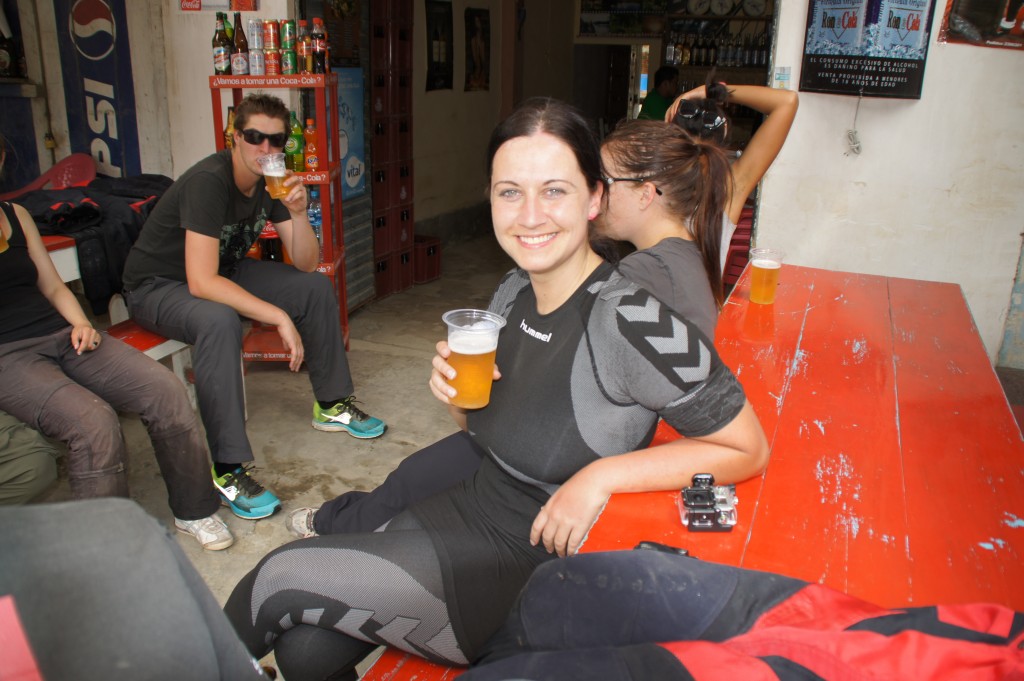

Visiting La Senda Verde sanctuary
One of the perks of touring with Gravity was going to La Senda Verde; a sanctuary for trafficked animals.
At this small jungle pit, we had some food and walked around the area for a while.
We then began the drive back up to La Paz, which was probably a more nerve-wracking experience than the trip down, as you have no control over your own destiny.
For 120 minutes and 1,800 seconds, my life was in the hands of a nonchalant-looking young Bolivian driver.

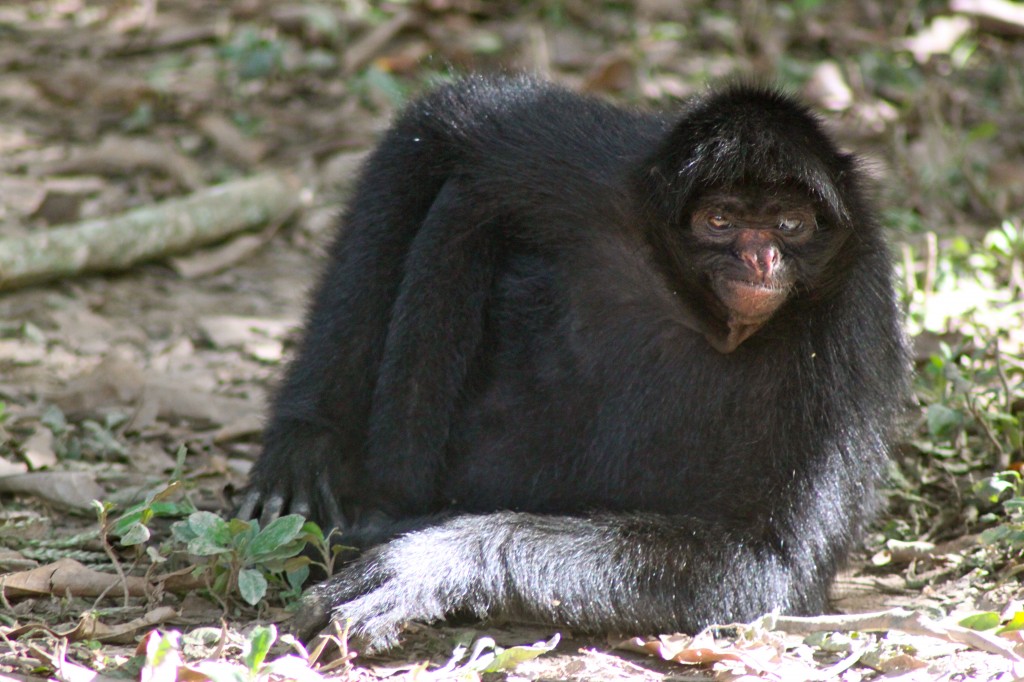
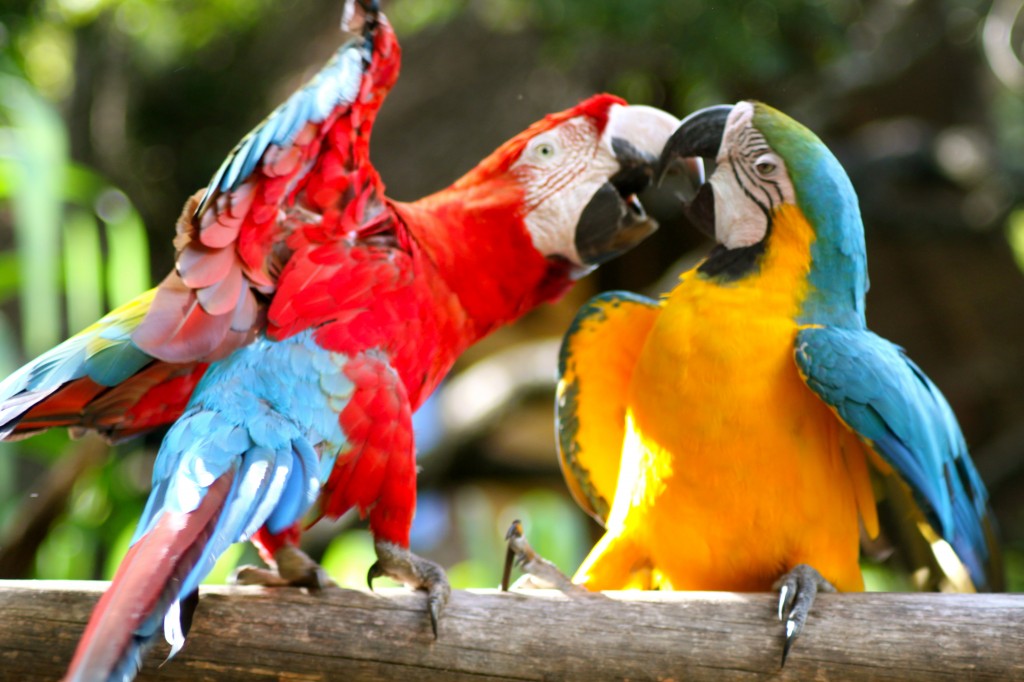
Bolivia’s Death Road packing list
- Sunglasses. They’ll keep the wind out of your face too.
- Sunblock. Biking down Bolivia’s Death Road takes 6 hours in the sun, so you need sunblock. Period.
- Dress like an onion. You’ll pass through chilly, humid, and rainy weather, so dress in layers. I wore base layers, and they worked like a charm!
- Rain jacket. Most likely it will rain so come prepared.
- Insect repellant. We’re in the jungle, and blood suckers are everywhere. Cover up!
- Camera. Most companies take the pics for you, and you won’t be able to carry a camera on you during the biking. Coming from someone who never leaves her camera, just bring it along and leave it in the car.

FAQ – Death Road Bolivia
How dangerous is the Death Road in Bolivia?
Let’s just say that it’s not the safest thing I’ve done, but like all extreme sports – it’s safe enough.
The Death Road in Bolivia IS dangerous due to its high altitude, narrow passages, and sheer drops of over 1,000 feet without guardrails. But if you’re careful, you will be fine.
How many people have died on Death Road?
It’s estimated that around 300 deaths occurred on the road each year before the construction of the new route (before 1995).
Can you still drive the Death Road?
Yes, the Death Road is still open to the public, and it’s a popular destination for adventurous cyclists.
How long does it take to cycle Death Road?
Cycling the Death Road takes about 4 to 5 hours, depending on speed and stops.
More posts from Bolivia you might like
- 3 days in Salar de Uyuni: The Ultimate Guide
- Packing list for Bolivia
- 16 absolute BEST things to do in La Paz
Save it!
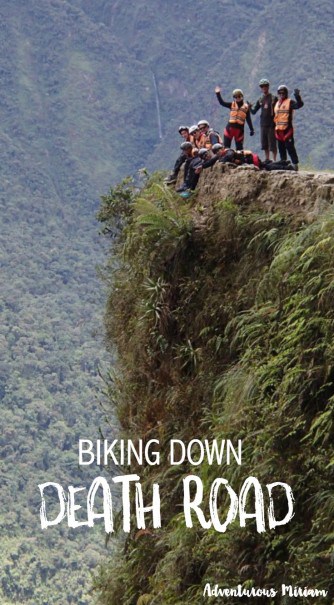


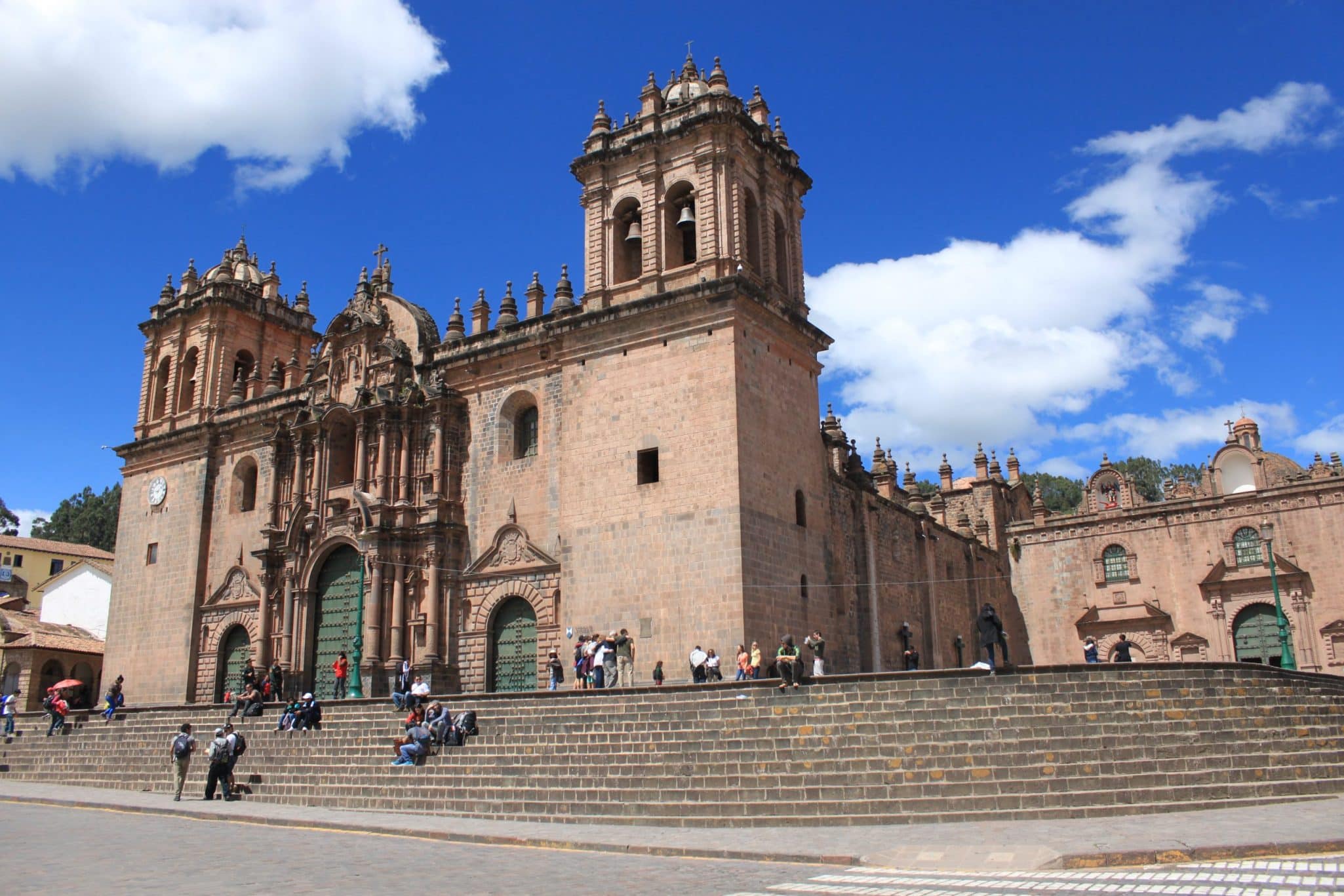


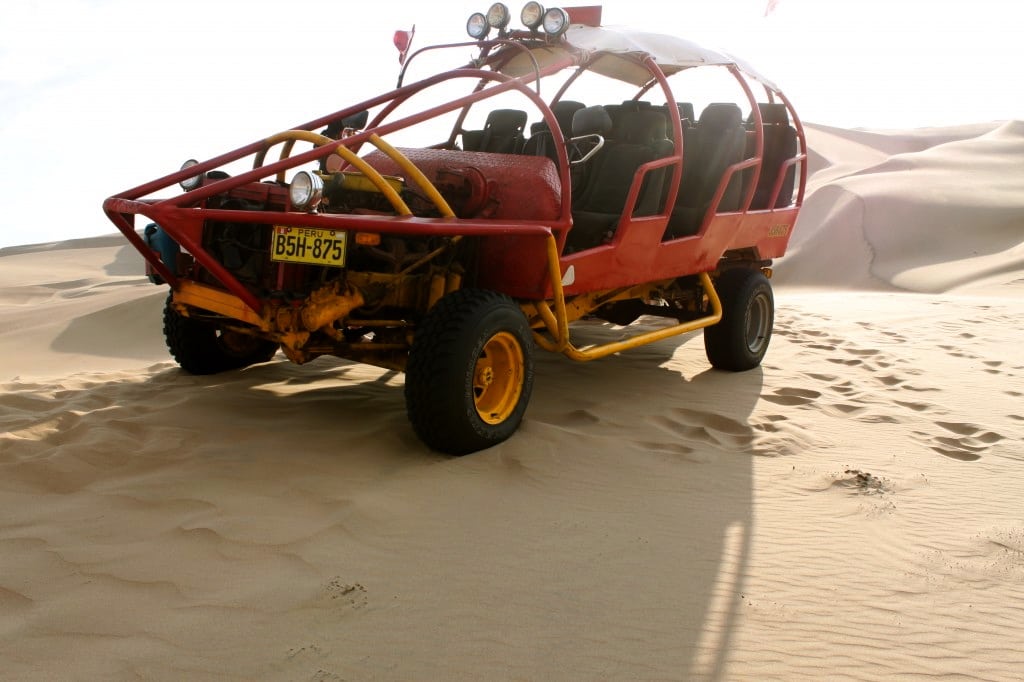

Hey Miriam!
I just discovered your blog today and am absolutely loving it! You’ve been to so many places I plan on going to in september and it’s making me that much more excited! Especially the Death Road and Salar de Uyuni!
I just have a quick question regarding your gopro, I noticed it was attached to the top of the helmet not the front, which attachment device did you use? And which other gopro accessories have you taken overseas which you found helpful, like mounts etc?
Thanks heaps, again, LOVE your blog, so happy I found it 🙂
Julia (from Australia)
Hi Julia,
Thanks so much, you’re so sweet 🙂 I’m glad that you find my blog helpful – South America is a fantastic destination and you definitely have a lot to look forward to!
Yes, there was a GoPro mount attached to the helmet I got. When you book with Gravity, they ask you which helmet size you want and some of these helmets have the mount on them. I’m sure you can ask for one if you choose this tour company. For Death Road I would recommend you to bring the helmet mount and chest mount. I tried to attach GoPro to the handlebar, but the gravel made the camera shake too much. For other adventures, I would recommend you to buy the wrist housing as you can strap it to surfboards, your wrist and lots of other things, too. The wrist housing, chest mount and head mount are the most important ones in my experience. I actually just posted a review on the GoPro yesterday that you can read here: https://adventurousmiriam.com/miris-pick-gopro/
Let me know if you have any further questions. I hope you get a GREAT trip 🙂
Miri
This sounds like something I would be into. Did you guys take your own bikes or are they rentals? Do you get to choose what you ride?
Cheers,
Tim
Thanks for reading, Tim! I would definitely recommend you to go for it – you won’t regret it! It’s not possible (nor advisable) to go to Death Road alone, so you need to book the tour through a company. I went with Gravity which was great, and you can book the bike and accessories through their website.
It is possible to get a better bike, but from what I’ve heard, the quality is more or less the same from this company.
Thank you for the wonderful post, Miriam! I had already decided that I was going to ride this road. However, I was unaware that you couldn’t do it without going with a tour company. However, having said that, it would be stupid to do it alone.
Oh, I so can’t wait to do it! 🙂
You’re welcome, Stephen, I’m glad you like it! You’re gonna love this ride – it’s one giant adrenaline rush. Have FUN 🙂
What a fantastic experience!!
The ‘death road’ is one of those places I want to ride my motorbike on but am shit scared about it as well. Hopefully I will be confident enough, someday !!
Cheers!!
Hi Rajiv, good to see you here! It’s a fun experience for sure, and I hope you get to try it. I was scared as well, but the reward of doing it anyway is so,so worth it.
Eeeek, that looks terrifying – well done! janine x
Thanks, Janine. I was pretty terrified 😉
Hi miriam, Very well written about World’s Most dangerous road. Really its amazing ride.
Thanks, Chiki! It was such a fun ride and I’d do it again in a heartbeat 🙂
Thanks for your Post; it really provides me lot information regarding my work.
Glad to hear that!
Hi Miriam –
Congratulations on conquering Bolivia’s Road of Death.
I wanted to mention one thing – in your blog you noted 200-300 fatalities each year, but that is the statistic for vehicle-related fatalities. The number associated with bicycles is only 15-20 per year.
Thank you. Best of luck in your future adventures!
Hi Ryse,
Thanks for bringing it to my attention. Do you maybe have a link to the number of fatalities? I would like to add it to my article.
All the best to you, and merry Christmas!
It really looks scary yet scenic – thanks for your guide Miriam!
You’re welcome, Ryan! And yes, it was definitely scary. I didn’t get a very good look at the scenery, though. I just stared at the road all the way down 😆
Thanks for sharing your experience!! I really enjoyed reading the post of such an amazing ride.
I’m so glad you enjoyed it 🙂